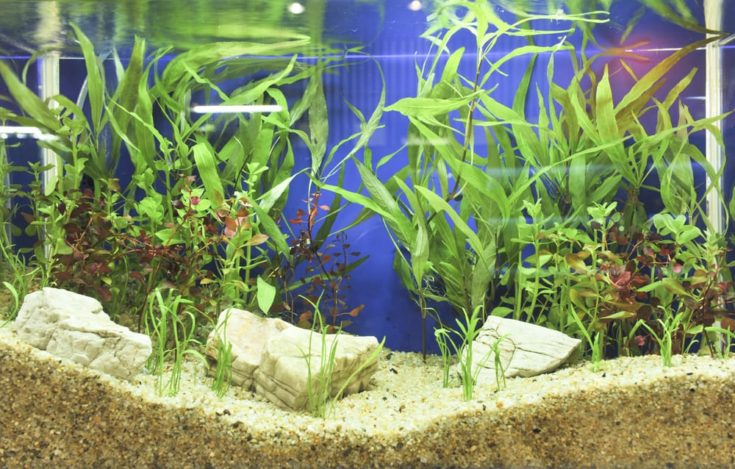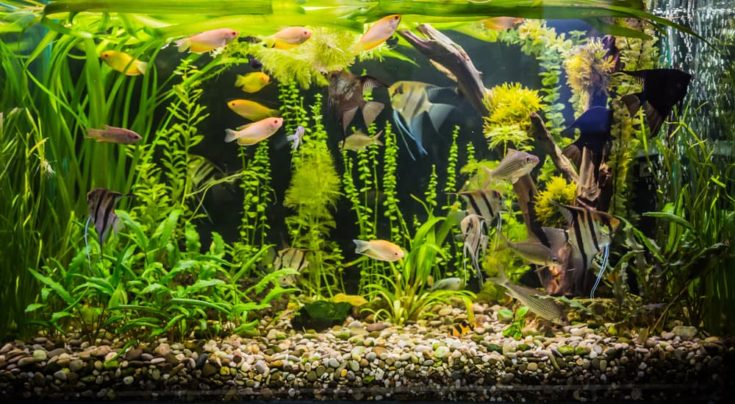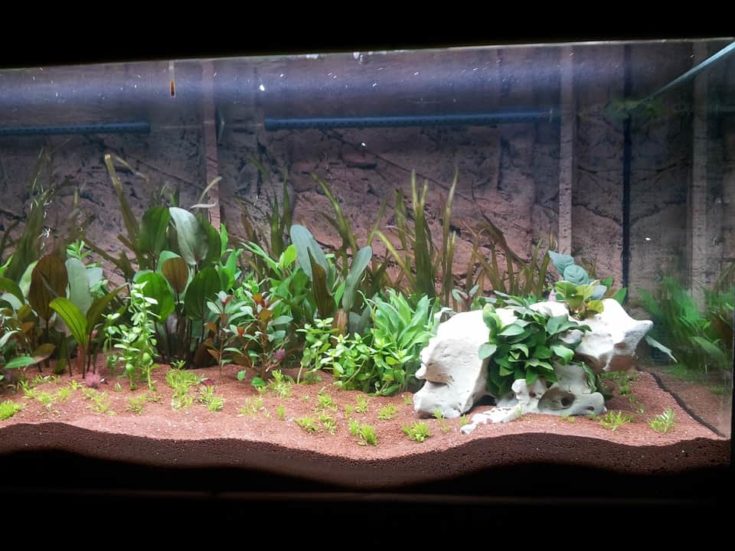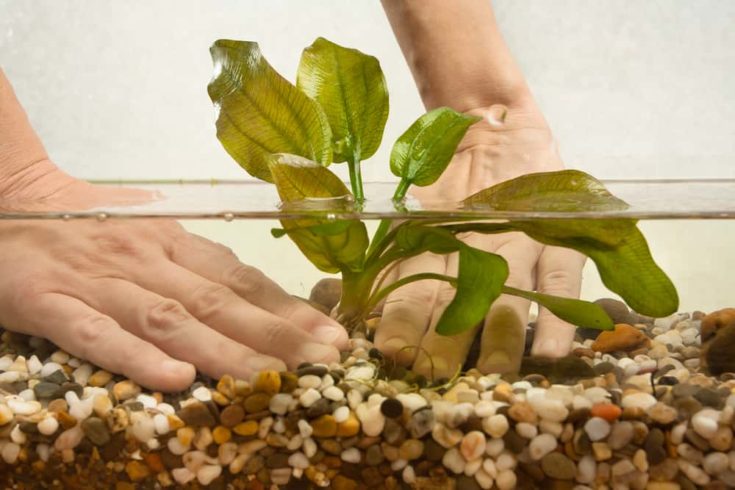Setting up a new fish tank is an expensive venture! Gravel, sand, and aquarium soil are expensive, so you don’t want to buy more bags of substrate than you need.
But how many bags of substrate are needed? What’s the best substrate for a planted tank? And do you really need to use substrate at all?
I always use a 1.5 to 2 inches depth of gravel or a mixed substrate, although 2 inches works best if you have an undergravel filter system. However, if you want to use sand, around 1 inch is usually sufficient.
That said, we’ve included an online aquarium stocking calculator or substrate calculator to work out how much sand or gravel you’ll need.
Read this guide to learn how to calculate exactly how much substrate you’ll need for your tank, potentially saving you a lot of money and hassle!
Substrate Calculator
The quickest and easiest way to work out how much substrate you need is to use a substrate calculator.
A good substrate calculator will enable you to enter the dimensions of your fish tank, the type of substrate that you want to use, whether the tank is to be planted or not, and even the fish species you intend to keep.
How Much Substrate Do You Need?

The depth of substrate that you need depends on several factors, including:
- The size, volume, and depth of your tank
- The fish species you intend to keep
- Whether you are using live plants or artificial ones
- What aquascaping design you want to create
- Your filtration system
As a general rule of thumb, if you’re using gravel, you need around 1.5 to 2 inches depth, closer to 2 inches if you have an under gravel filtration system. If you want to use a mixed substrate, the depth requirement remains the same.
If you prefer to use sand, you’ll need a little less, and around 1 inch should be sufficient. Note that if you have an under gravel filter, you can’t use sand, as the material is too fine and would clog the filter plates.
In all cases, if you plan on keeping large fish that dig or species that like to burrow into the substrate, you’ll need to add another inch or so.
Planted Tanks

Planted tanks look great, and the presence of living plants can be beneficial to your fish, too, helping to lighten the bioload in your tank by utilizing nitrates in the water column.
Substrates are crucial if your plants are to thrive and grow. Essentially, aquatic plants are much the same as garden plants in that they need nutrients, including magnesium, potassium, iron, and nitrogen, which they derive from the substrate and the water.
It’s important to research the species of plants that you want to use, as they have different requirements when it comes to the substrate. For example, species such as Anubias and Ferns don’t need a substrate at all, whereas Cryptocoryne needs plenty of space to accommodate its root system and prefers a deeper covering on the bottom of the tank.
You can use a slanted substrate to create a more 3-dimensional aquascape that suits bigger plants with longer root systems. However, 2 to 3 inches of gravel or sand is generally sufficient for most plant species.
Nutrient Layer

The coloration, growth rate, and overall health of the plants are dependent on the availability of nutrients in the aquarium, so when creating a planted aquarium, you should include a nutrient layer underneath the layer of the substrate.
Spread the nutrient layer on the bottom of your tank to a depth of about one inch. Cover that with two inches of gravel. If you have an aquarium of greater than 55 gallons, you’ll need to increase the gravel or sand layer up to 3 inches deep.
Digging Fish!
When choosing a substrate for your tank, I always bear in mind the behavior of the fish species I intend to keep.
Some fish species, such as many of the loaches, love to burrow down into the substrate. Now, if you opt for a sharp gravel substrate medium, that’s going to injure your fish or discourage their natural behavior, leading to stress and poor health. So, if I’m keeping loaches or other burrowing fish, I prefer to use either a fine gauge, smooth gravel, or sand.
Other species, such as goldfish and cichlids, are renowned diggers, which can cause havoc if you want to keep living plants in your tank. Gravel is the best medium for planted tanks, as sand doesn’t provide a firm enough anchor point for plant roots. Sand is also too easy for fish to dig up, leaving you with a tank full of floating, damaged plants!
After spending many frustrating hours replanting uprooted plants, I now use column-feeding species that don’t need to take root in the substrate. These plants look great attached to pieces of driftwood or rocks, and the fish can’t disturb them.
Floating plants are another option that doesn’t need any substrate at all. I love using these floaters to provide shade and shelter for my shy fish and fry.
Conclusion

The amount of substrate that you use in your aquarium depends on a few factors, including the size of your tank, the fish species you want to keep, and whether you intend to have live plants. Ideally, you should have around 1.5 to 2 inches of gravel or sand, a little more than that if you have rooted plants too. Also, plants require an additional inch of a nutrient medium below the substrate.
You can use our substrate calculator to work out exactly how much substrate you need or grab a pen and paper and use the simple manual calculation we’ve included above.
If you have any questions concerning how much substrate you should use or what kind of substrate would be the best choice for your aquarium, please enter them in the comments box below.
We’ll do our best to give you the information that you require.
